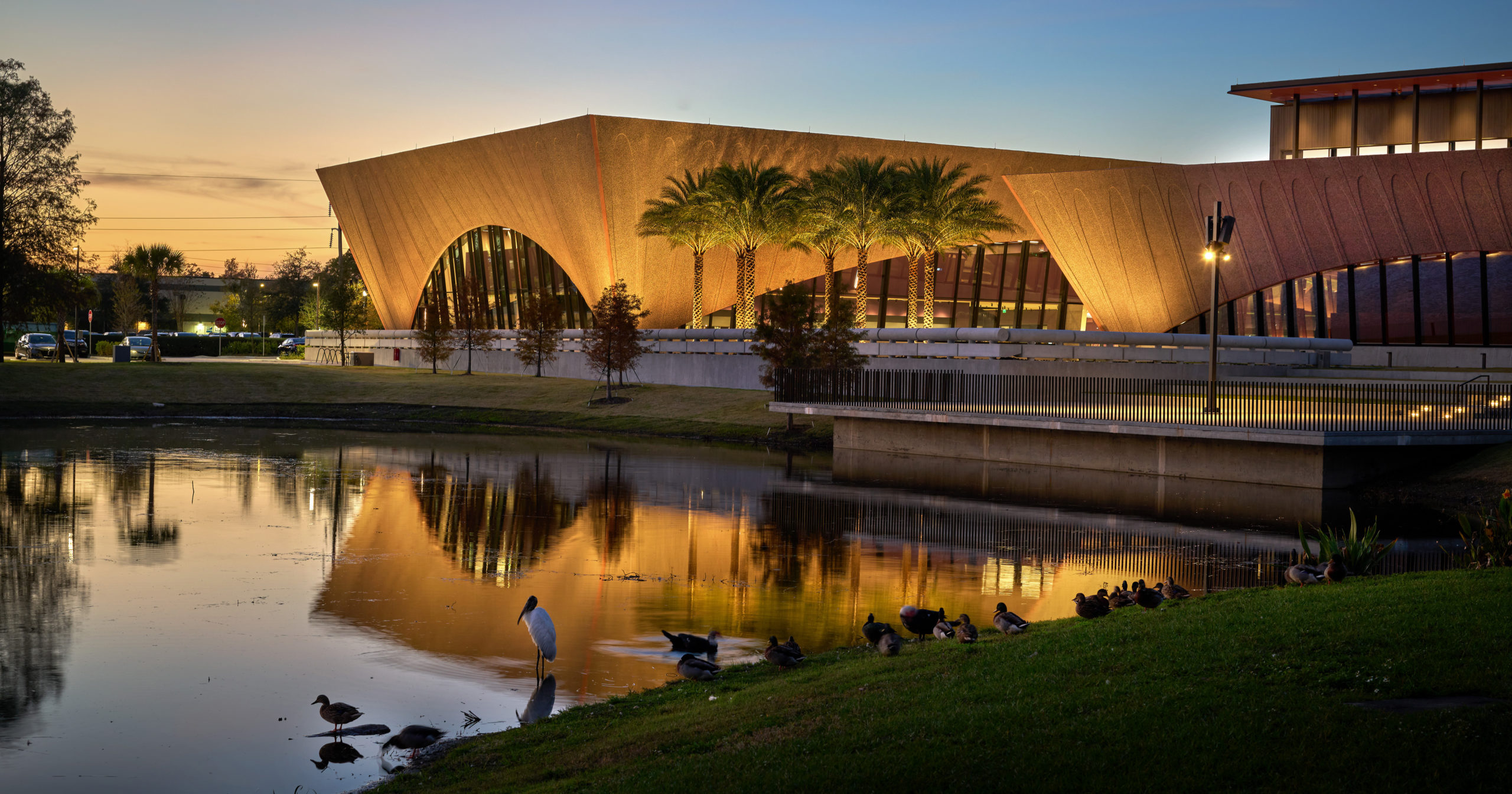Cone Hut – A hut made out of spruce cones – 70 % of Sweden is covered with forests, often dominated by cone-bearing trees like spruce and pine.
Architizer chatted with Ulf Mejergren, Founder of Ulf Mejergren Architects (UMA), to learn more about this project.
Architizer: Please summarize the project brief and creative vision behind your project.
Ulf Mejergren: We have started a series called ‘Primitive Huts’ where we investigate materials found in nature combined with our creativity to create shelters. There is so much to learn from nature and there is a natural built-in cleverness that has evolved over the ages that is simply astounding. Spruce cones for example, come with amazing built-in mechanics that make the cone open or close depending on if it rains or is sunny, even when they are detached from the tree. This feature made it also possible for us to interlock them with each other.

© Ulf Mejergren Architects (UMA)
What inspired the initial concept for your design?
The initial concept, or the method to arrange the cones into a shelter, was a coincidence sort of. I saw one of my kids pressing a spruce cone into a mesh net that we have to protect our vegetables we’re growing next to our house to be eaten by rabbits and deer. The cone stuck quite easy and was almost impossible to take away. I really liked the technique and when we where on a hike in a nearby forest the same day I discovered that the forest floor had a surprisingly large number of cones in a good condition. So, after some tests, we actually built the hut the next week.
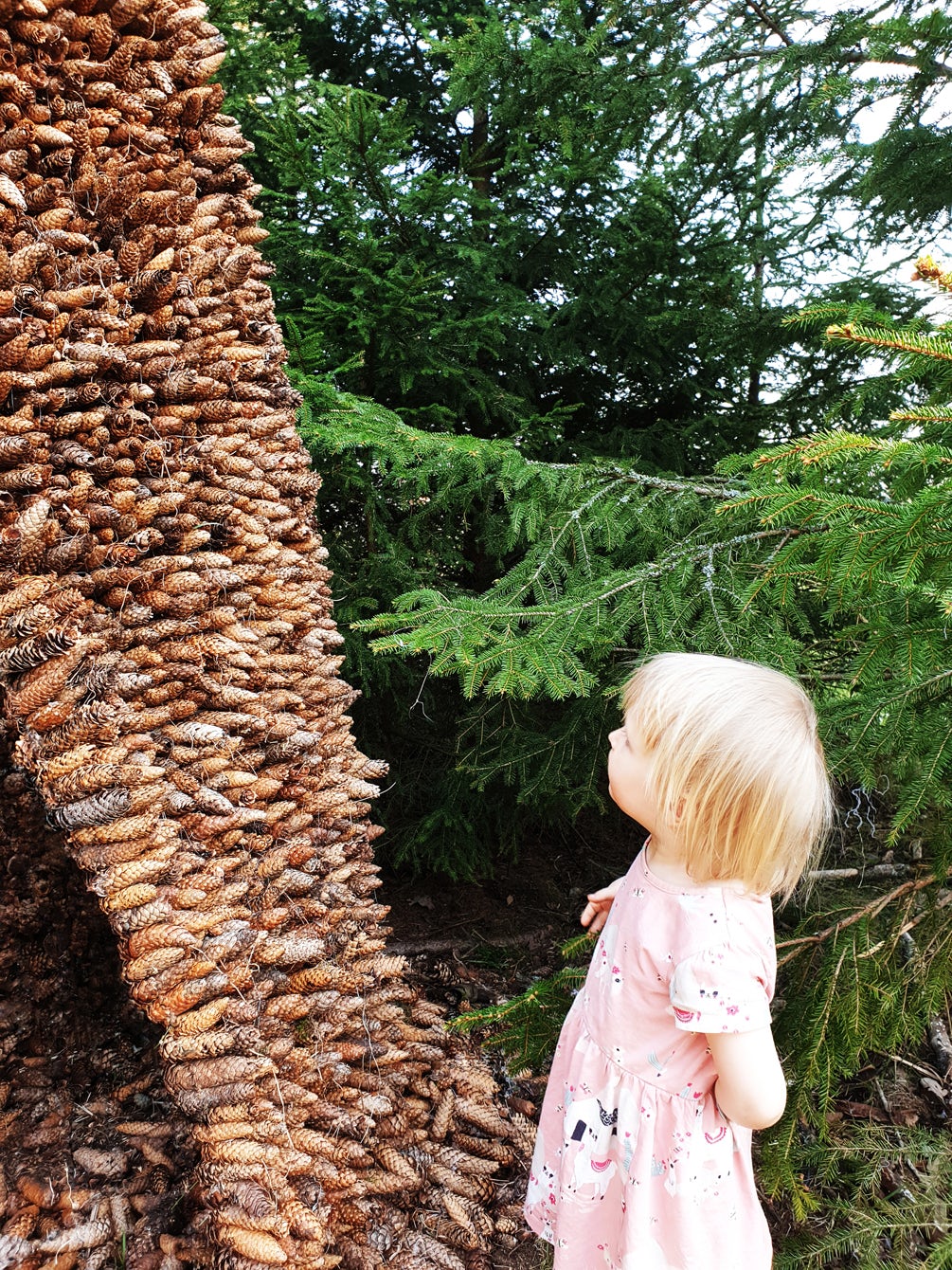
© Ulf Mejergren Architects (UMA)
What do you believe is the most unique or ‘standout’ component of the project?
The uniqueness is certainly the material in itself, which I haven’t seen been used in this scale before. It is such a fun material, and it has actually been used by kids in generations as a way to make their own “farm animals”, simply by inserting four small sticks as legs to the cone, and you quite quickly have your own collection of cows and pigs to play with. In Sweden there is also such an abundance of cones and it can be found pretty much anywhere.

© Ulf Mejergren Architects (UMA)
What was the greatest design challenge you faced during the project, and how did you navigate it?
We had a mesh that had pretty wide gaps so we could maximize the number of cones and to make the mesh disappear, so this meant that we had maybe 6-8 cones that had to be placed in each of these gaps, so the trickiest challenge was to balance up the different cone sizes to make them stay in place together and fill each gap as much as possible without pressing to hard so it would impact the other cones in the other gaps that already had been filled.
So we had to sort cones by size for a couple of days.

© Ulf Mejergren Architects (UMA)
How did the context of your project — environmental, social or cultural — influence your design?
The context for this project is everything and it is built just next to the forest to minimize transport time since everything is picked by hand and transported by walking with two full bags of cones each time when we made our collection rounds.
What drove the selection of materials used in the project?
Since this hut is a part of a series where we will build shelters from practically every different material that can be found in nature, spruce cones would eventually be used as a building material since it can be found in such abundance. We also have made huts out of mushrooms, leaves, snowballs, ice, willow etc.
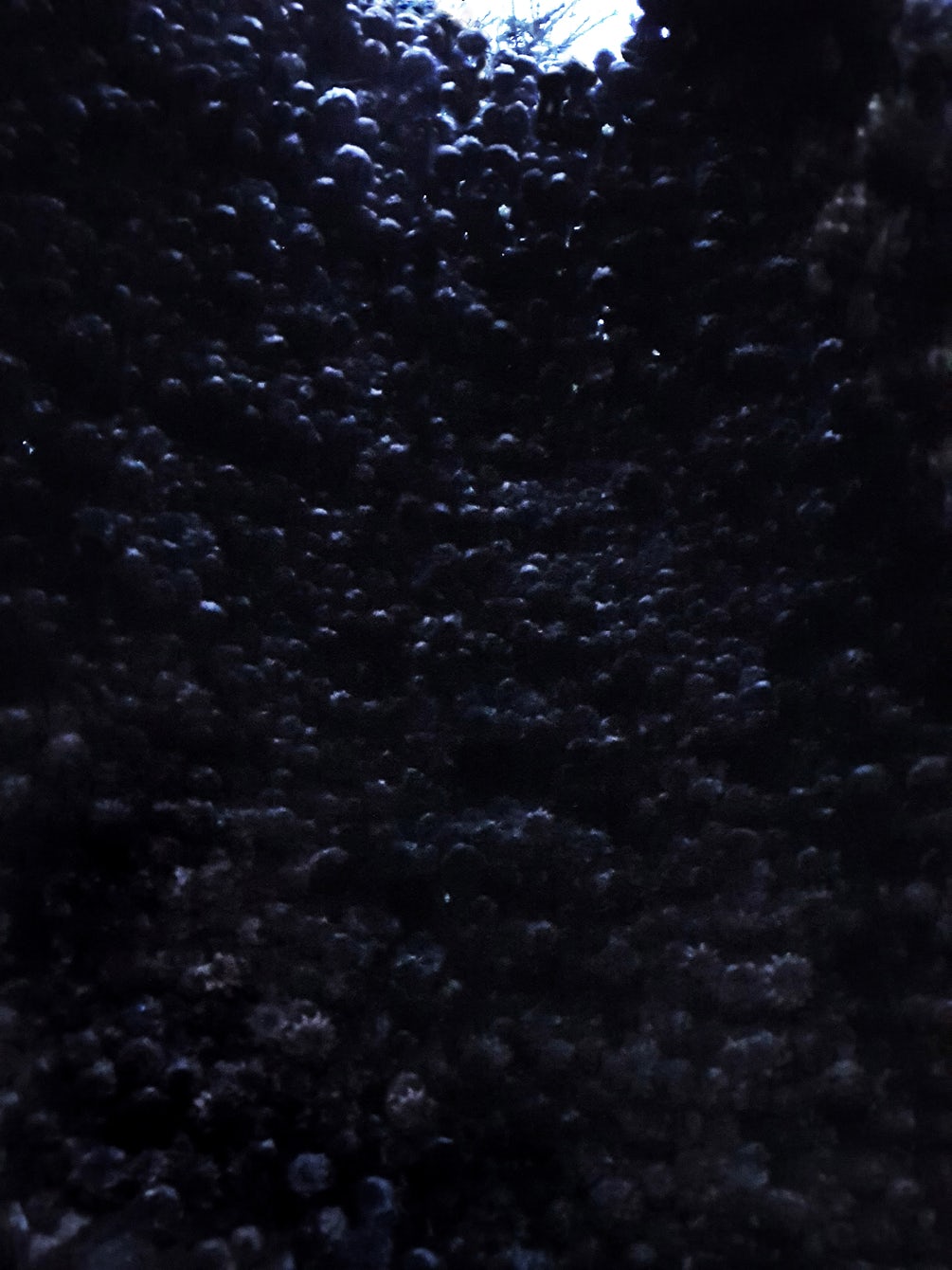
© Ulf Mejergren Architects (UMA)
What is your favorite detail in the project and why?
The texture and the color are amazing we think. No cone is the other one alike and together they create a sort of a super scale which looks pretty nice.
How important was sustainability as a design criteria as you worked on this project?
Sustainability is one of the key elements in this series where every project has locally found material as the main protagonist. After a while, most of these shelters can literally just be returned to nature where they came from.
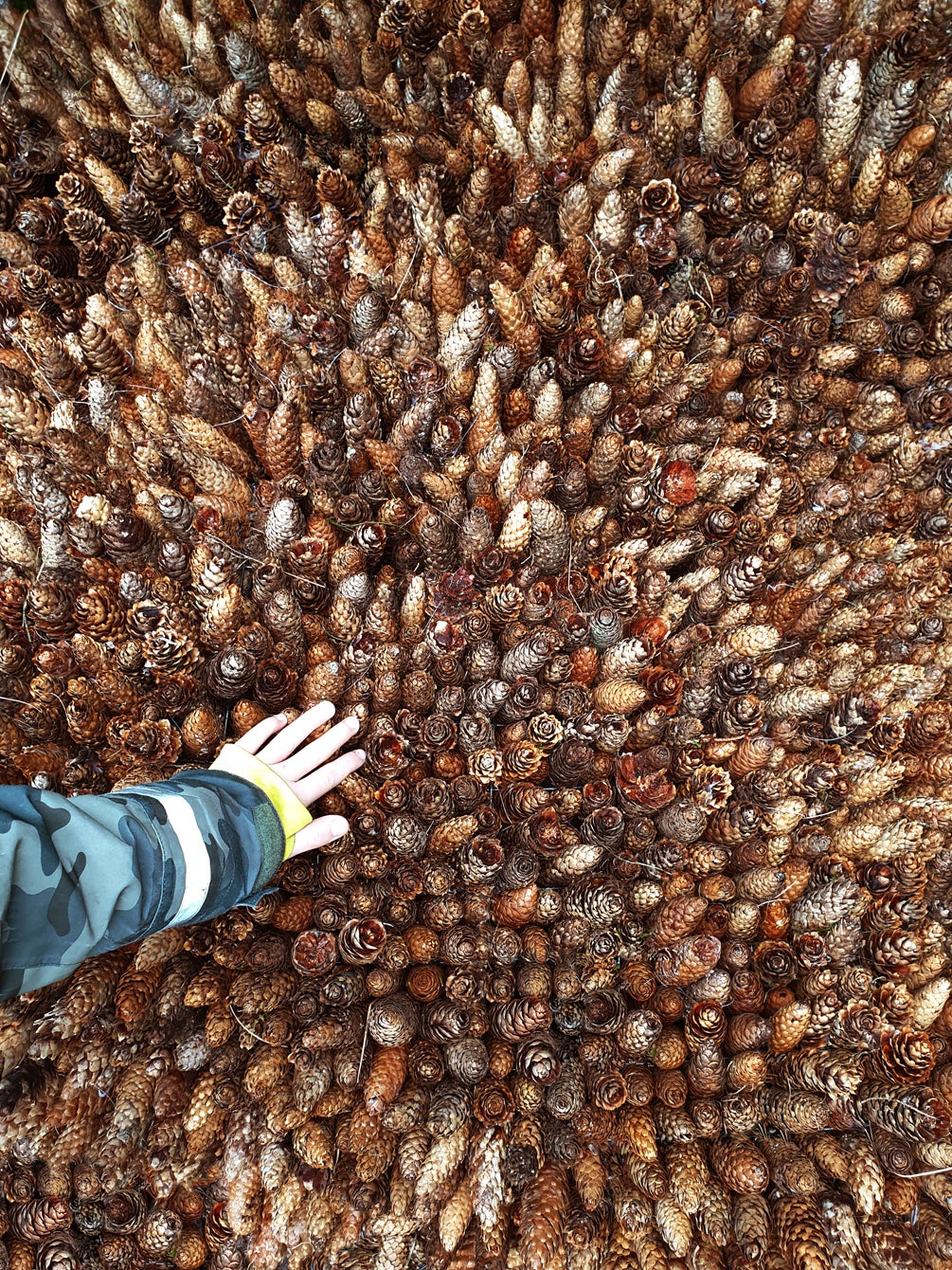
© Ulf Mejergren Architects (UMA)
In what ways did you collaborate with others, and how did that add value to the project?
This is more a collaboration with nature, where we had to observe nature’s own awesomeness and build our project around that.
Were any parts of the project dramatically altered from conception to construction, and if so, why?
We first had an idea to glue all spruce cones together just by using spruce resin, but it didn’t work very well, so we had to use a mesh as a backbone for the project, but since the mesh technique was the reason that led us to investigate the cones as a material in the first place, it also made sense to use it.

© Ulf Mejergren Architects (UMA)
How have your clients responded to the finished project?
This project was clientless, but the responses we had from people that has seen it has been very positive.
What key lesson did you learn in the process of conceiving the project?
The key lesson made is that we are on a very nice path of exploration and we will keep making these Primitive Huts once in a while. It’s a great exercise in material inspiration and creativity.
How do you believe this project represents you or your firm as a whole?
This project represents us good in a way, since we’re often doing unexpected things and we are thinking very freely and we are very curious of the world we’re living and all the fantastic things it contains.
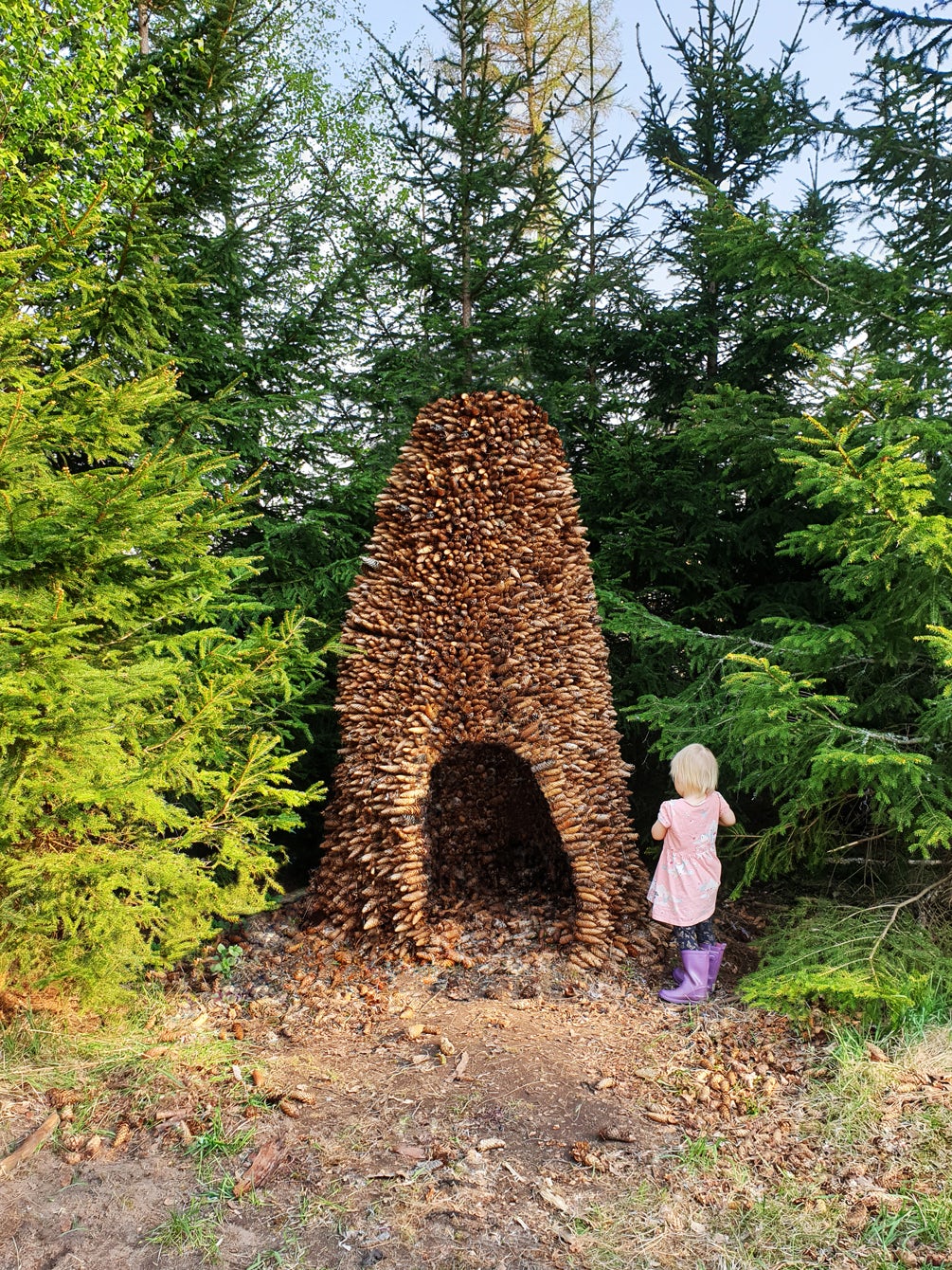
© Ulf Mejergren Architects (UMA)
How do you imagine this project influencing your work in the future?
There is a simplicity to this project, much like a chef that makes the most of a limited number of ingredients but that still has a nice flavor.
Credits / Team Members
Ulf Mejergren
Products / Materials
Spruce cones
For more on Cone Hut, please visit the in-depth project page on Architizer.
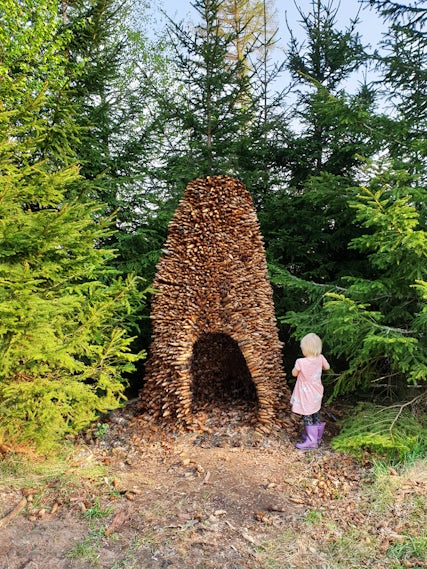




 Cone Hut
Cone Hut 
